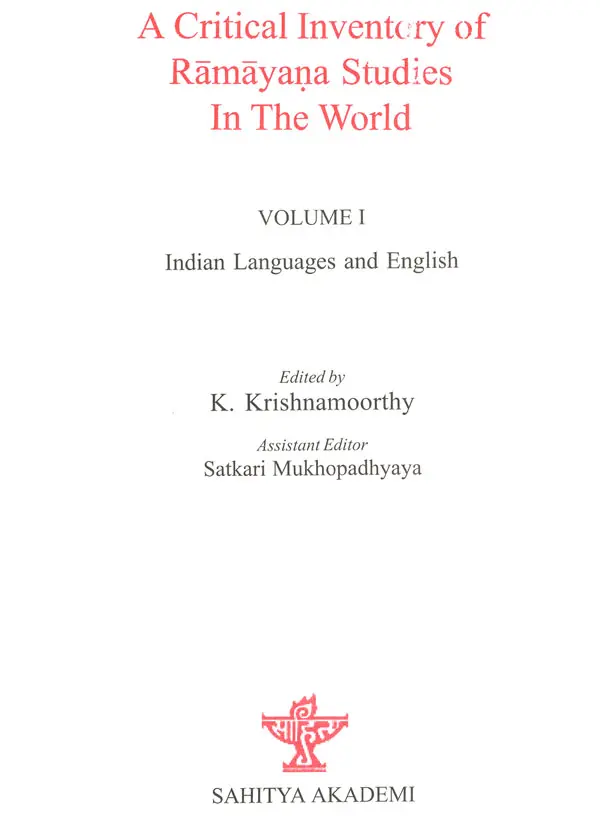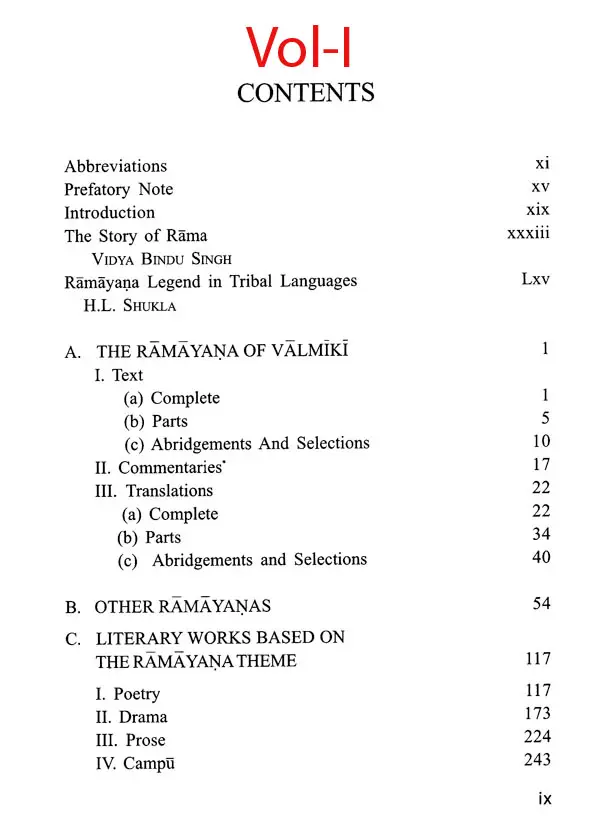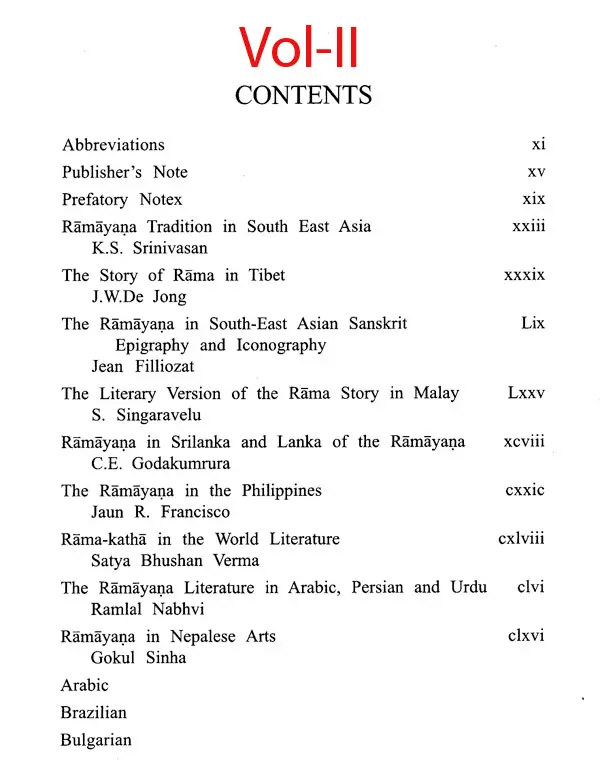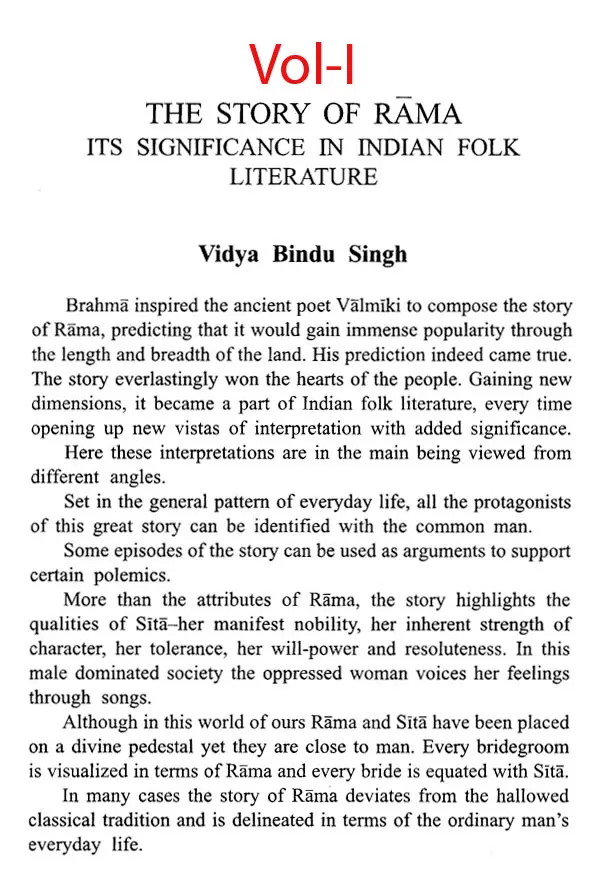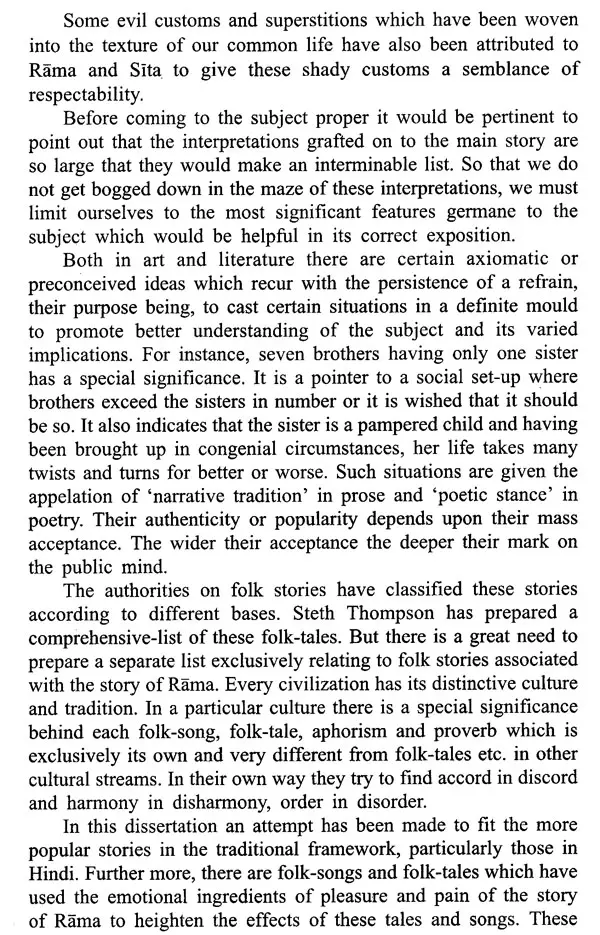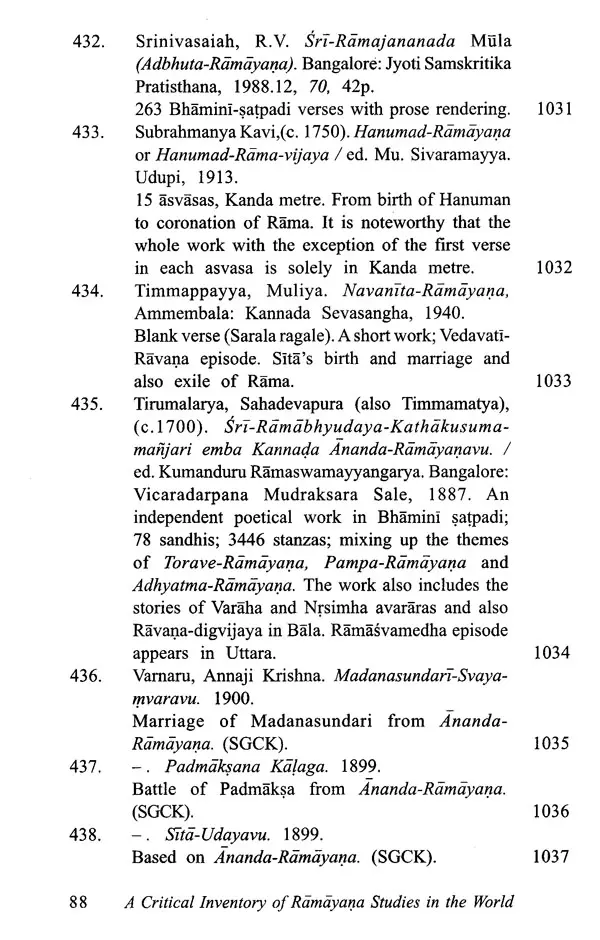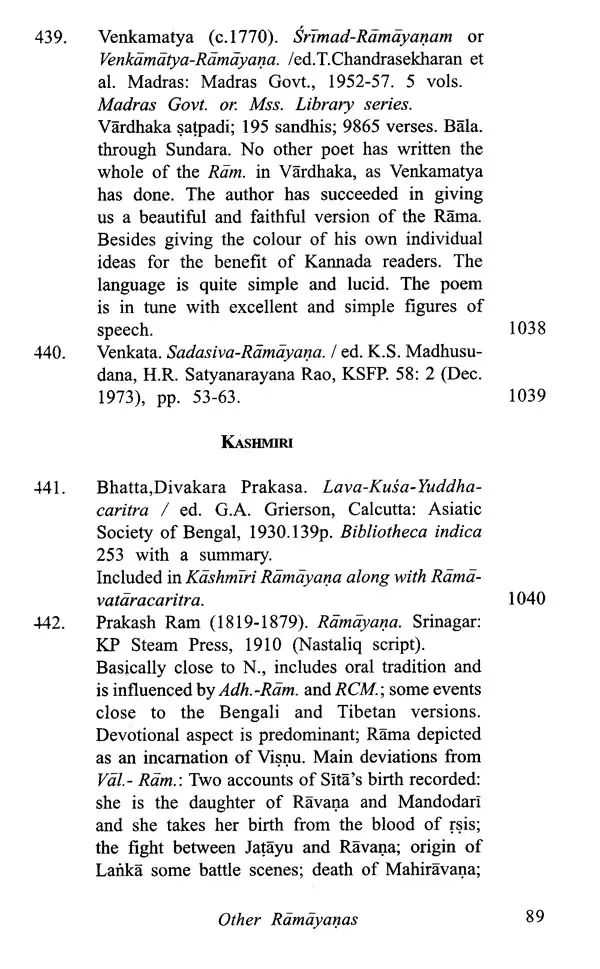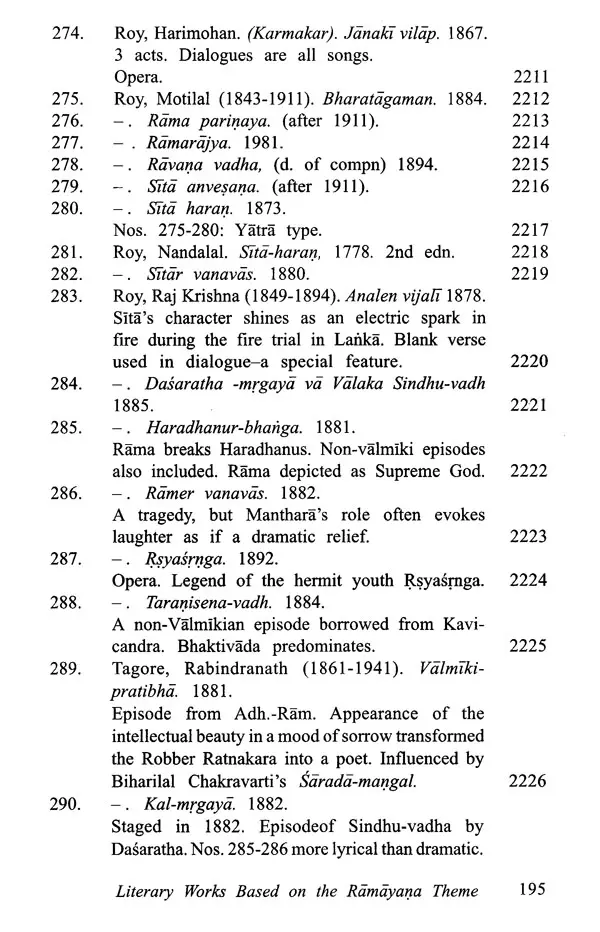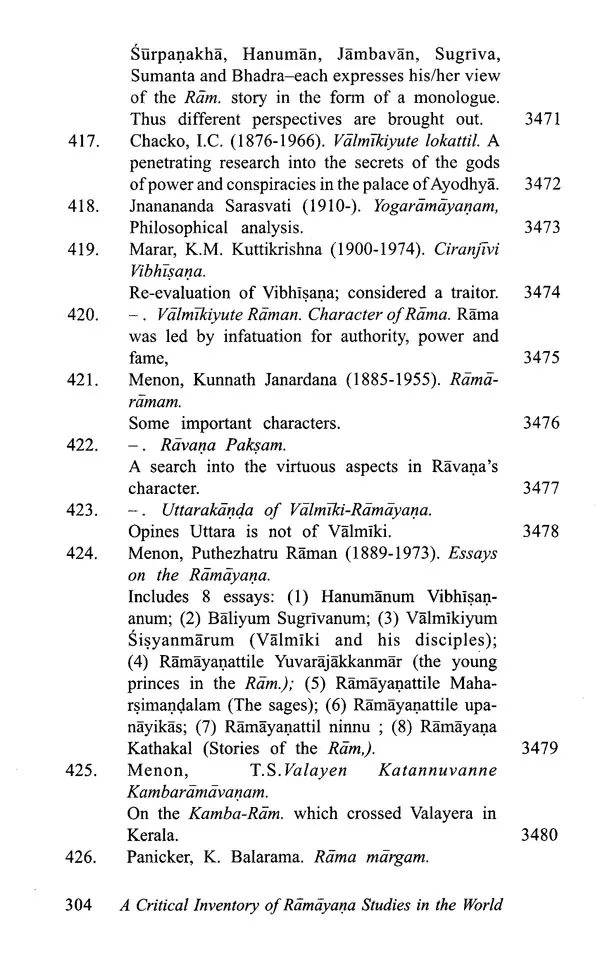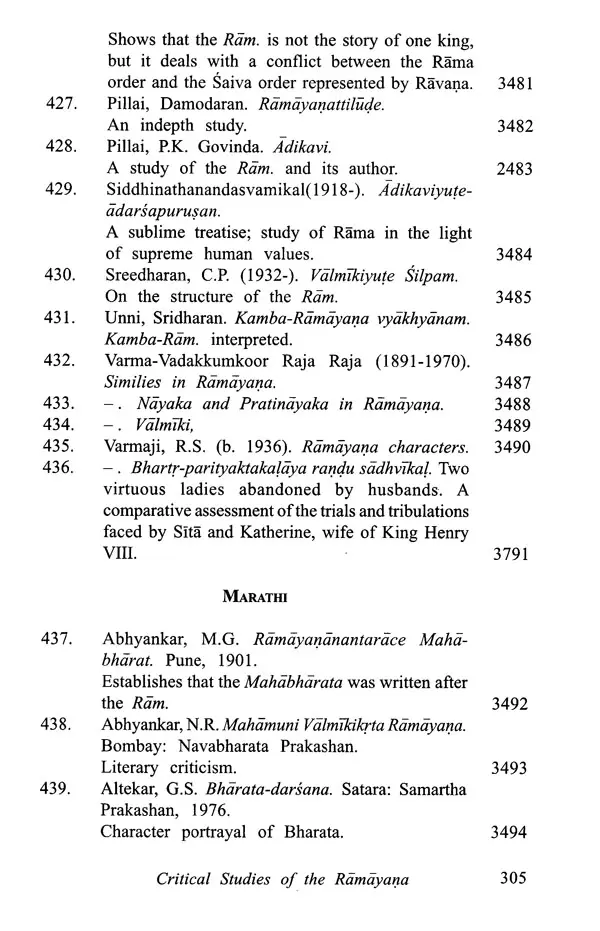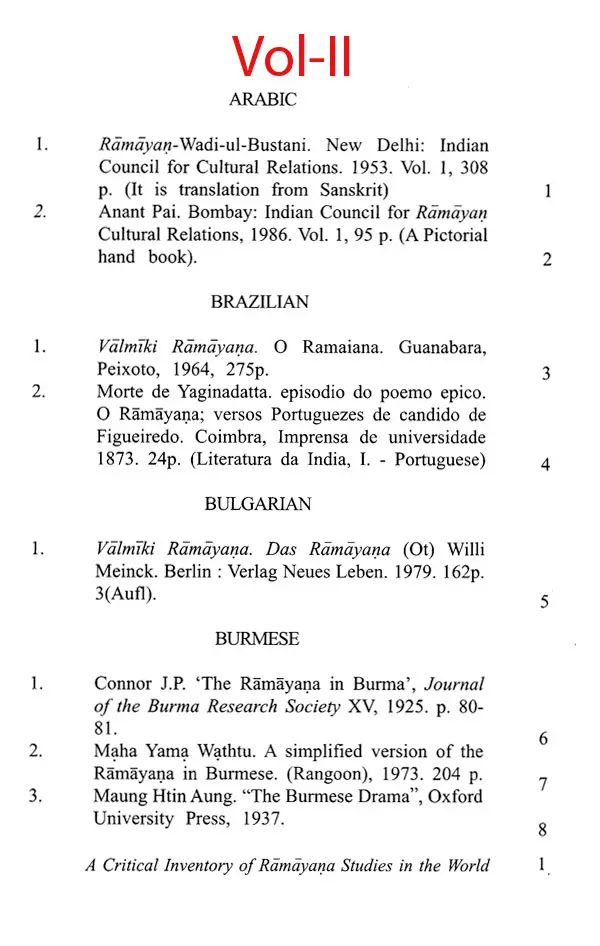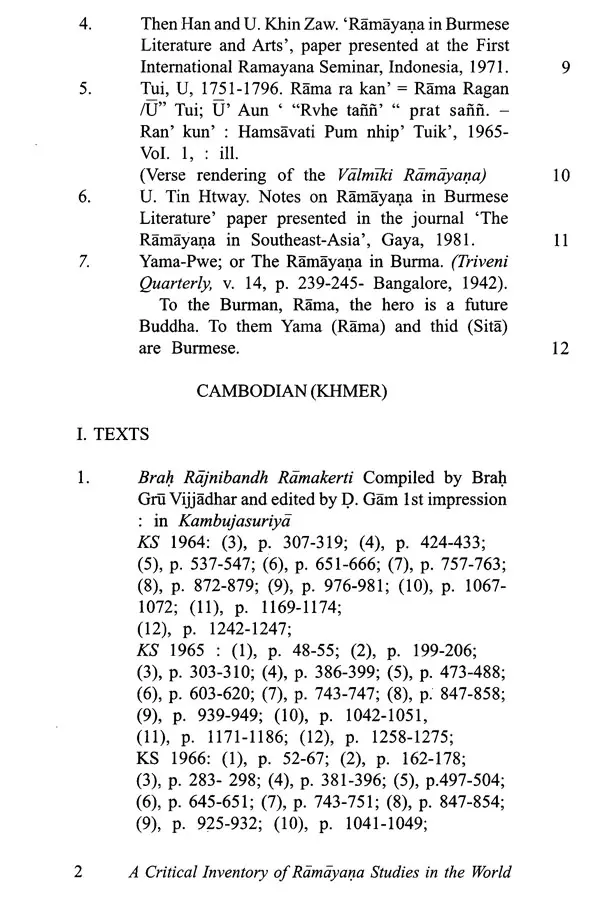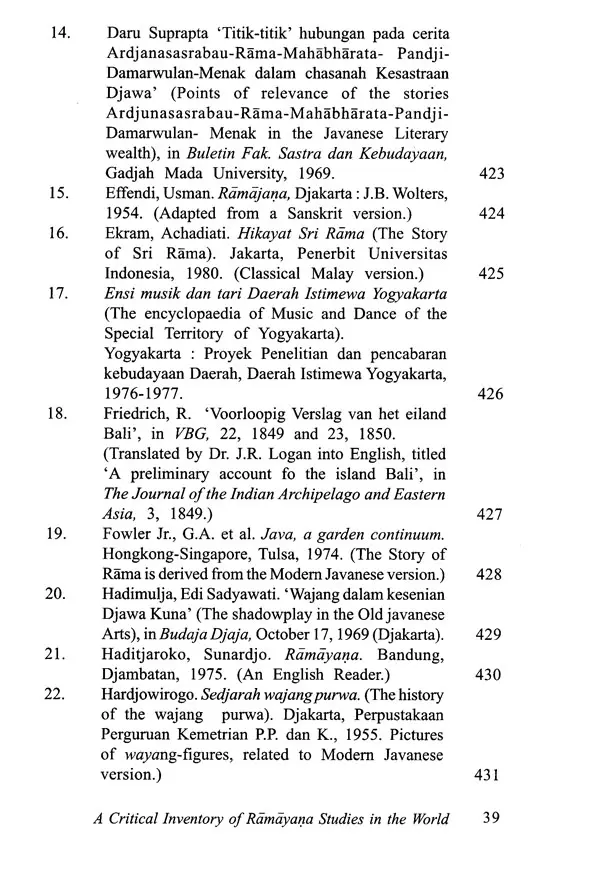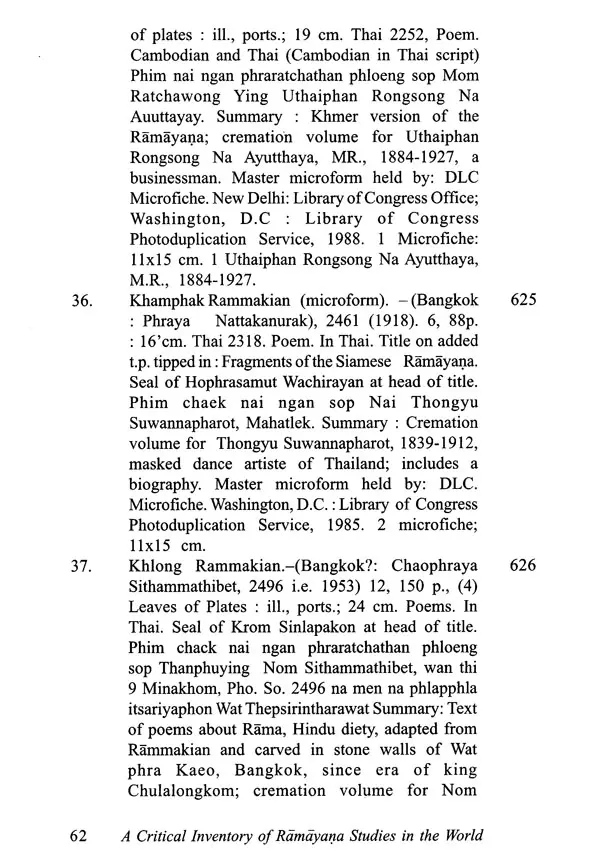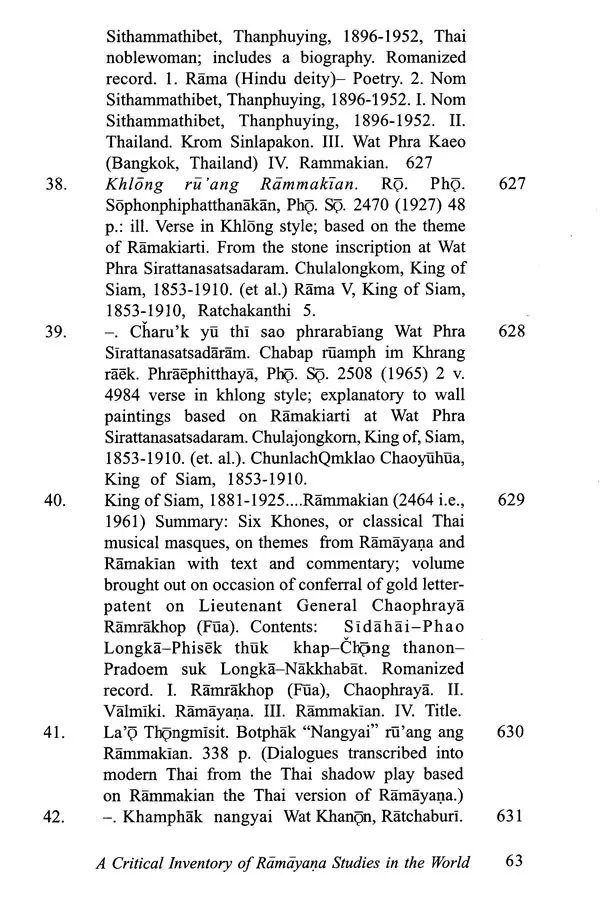
A Critical Inventory of Ramayana Studies In The World in Set of 2 Volumes (Vol:1 Indian Languages and English Vol:II Foreign Languages)
Book Specification
| Item Code: | UAM811 |
| Author: | K. Krishnamoorthy |
| Publisher: | SAHITYA AKADEMI, DELHI |
| Language: | English |
| Edition: | 2021 |
| ISBN: | Vol:I- 9789390310449, Vol:II- 9789390310456 |
| Pages: | 662 |
| Cover: | PAPERBACK |
| Other Details | 8.50 X 5.50 inch |
| Weight | 1.05 kg |
Book Description
The appeal of the Ramayana, one of the national epics of India, is universal, because it is an expression of man's eternal quest for abiding human values. It is the repository of an ancient heritage which has travelled across the boundaries of India to several other Asian countries. It has also profoundly enriched our literature and other performing and visual arts, covering a wide spectrum of the socio cultural life of the people.
A Critical Inventory of Ramayana Studies in the World is the first volume of a bibliography of the Ramayana narrative, containing a comprehensive list of reading material in twenty-two Indian languages recognised by Sahitya Akademi, in addition to Persian. The present volume includes information on various editions of Valmiki's Ramayana alongwith its several commentaries and translations. Besides, other versions of the Ramayana both in Sanskrit in the regional languages, adaptations and translations, as well as creative works based on the Ramayana theme-including poetry, drama, ballads, hymns and songs-find a place here.
The appeal of the Ramayana, one of the national epics of India, is universal, because it is an expression of man's eternal quest for abiding human values. It is the repository of an ancient heritage which has travelled across the boundaries of India to several other Asian countries. It has also profoundly enriched our literature and other performing and visual arts, covering a wide spectrum of the socio cultural life of the people.
This is the Second volume of A Critical Inventory of Ramayaṇa Studies in the World in 28 foreign languages in addition to Urdu and Nepali. The volume also contains a number of learned articles on Ramayana variations by eminent scholars.
This volume is a joint project of Sahitya Akademi and the Union Academique Internationale, Bruxelles. Keralapura Krishnamoorthy (b.1923-d.1997) the editor of this volume, had a brilliant academic career at the University of Mysore and served as Professor and Head of the Department of Sanskrit in the Karnataka University, Dharwad from 1959 to 1984. His well-known publications include Dhvanyaloka text critically edited (1982), Vakroktijivita text critically edited (1977), monograph on Kalidasa (1972) and Banabhatta (1977), and independent works like Essays in Sanskrit Criticism (1974), Studies in Indian Aesthetics and Criticism (1979) and critical edition of Bharata's Natyasastra with Abhinavabharati. A recognised authority on Indian poetics, Krishnamoorthy has won several research prizes and awards including the President's Certificate of Honour in 1978.
Valimiki, the author of the Ramayana, the earliest available work on the Rama legend, is traditionally believed to be a rsi, a sage, a man of wisdom, who could visualize the past, the present, and the future. Since he wrote his Ramayana, an epic poem par excellence, at least twenty-seven hundred years ago, it has been widely read in its Sanskrit original by scholars and laymen alike and has had a firm grip on the psyche of the Indian people. It is. indeed, the fountain source of a great tradition of literature, culture and religion. There are hundreds of translations of the text in all the major languages of the world, besides numerous adaptations, variations, versions and creative works-narrative poems, plays, prose works-based on it. The legend first narrated by Valmiki and then modified in various regional cultures and religious traditions has inspired innumerable forms of plastic and performing arts all over India and South East Asia. Such is the greatness of the Ramayana and it is, therefore, no wonder that it has been the subject of persistent research in the fields of history, literature, arts and anthropology.
Before going into the details of the project of the present Inventory, it will not be out of place to discuss the form, contents and genesis of Valmiki's Ramayaṇa. A curious student may ask what genre Valmiki's Ramayana belongs to. Western orientalists call it an epic. Some of the Indian scholars object to such a classification; they argue that the definition of epic as formulated by Western poeticians, both ancient and modern, which finds its best examples in Homer's Illiad and Odyssey, or Vergil's Aenid, is not applicable to the Ramayana of Valmiki. It is believed that an epic has heroism as its chief sentiment. The Ramayana does narrate the battle between. Rama and Ravana, but it cannot be called a poem exclusively of heroic sentiment (vira rasa); the sentiments of pathos (karuna) and love (srngara) are equally dominant here. The term 'epic' is generally translated in Indian languages as 'mahakavya'. The traditional Indian scholars object to the Ranayana being called a mahakavya, because they think that the definition of a mahakavya as formulated by poeticians such as Dandin' et al. does not suit the Ramayana as much as it suits Kalidasa's Raghuvamsa and Kumarasambhava or Bharavi's Kiratarjuniya. Again, it is true that the Ramayana may not wholly conform to the norms laid down by the Western scholars. but this does not debar the work from being considered a mahakavya It is not necessary to conceive the term mahakavya as a mere synonym of 'epic'. The term 'mahakavya' has been very much in vogue in the treatises on poetics in Sanskrit since ancient times. It is to be borne in mind that though the Ramayana has been very often called a narrative or a legend (akhyana) and history (itihasa) in Indian tradition, its being a poem has never been disputed. Valmiki mentions, several times, his work as a poem (kavya). It is also universally accepted that the Ramayana is great (mahat), both in its bulk and in its contents, among the poetic compositions (kavyesu) of India. It is, therefore, a 'great poem', a mahakavya, by definition.
**Contents and Sample Pages**
